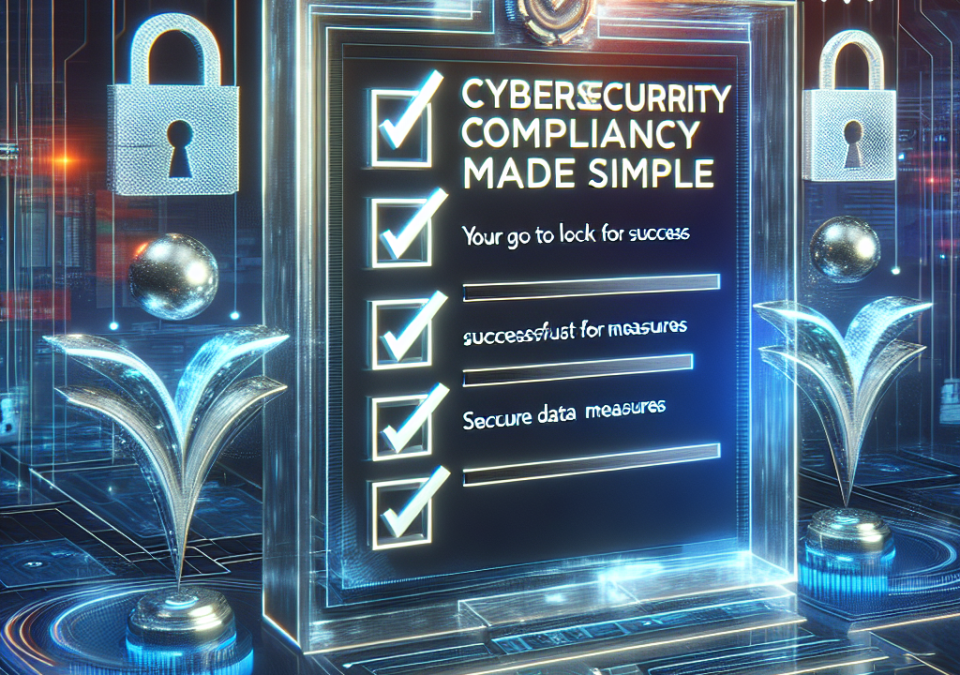
Navigating Industry Standards: A Quick Look at PCI-DSS, HIPAA, and More
July 12, 2025
The Intersection of IT Governance and Security Compliance: What You Need to Know
July 13, 2025
In an era where digital threats continuously evolve, cybersecurity compliance has become essential for organizations of all sizes. Ensuring compliance not only protects sensitive data but also enhances trust and credibility with customers, partners, and stakeholders. While navigating the myriad of regulations and standards can seem overwhelming, a structured checklist can simplify the journey toward cybersecurity compliance.
Understanding Cybersecurity Compliance
Cybersecurity compliance refers to the adherence to laws, regulations, and standards designed to protect sensitive information from unauthorized access, breaches, and other forms of cyber threats. Depending on the industry and geographical location, organizations may be required to comply with various frameworks such as:
- General Data Protection Regulation (GDPR): Focuses on data protection and privacy for individuals within the European Union.
- Health Insurance Portability and Accountability Act (HIPAA): Establishes national standards for the protection of health information.
- Payment Card Industry Data Security Standard (PCI DSS): A set of security standards aimed at organizations that handle credit card information.
- Federal Information Security Management Act (FISMA): Provides a framework for securing government information systems.
Why Compliance Matters
- Risk Mitigation: Compliance reduces the risk of data breaches and the potential financial and reputational damage associated with them.
- Legal Protection: Adhering to regulations can shield organizations from legal penalties and liability in case of a data breach.
- Customer Trust: Demonstrating compliance can enhance an organization’s reputation and instill trust in customers.
- Operational Efficiency: Implementing compliance measures often leads to improved processes and security protocols.
Cybersecurity Compliance Checklist
Achieving cybersecurity compliance can be straightforward if approached methodically. Here’s a comprehensive checklist to guide you through the process:
1. Identify Applicable Regulations and Standards
- Assess which compliance frameworks apply based on your industry, location, and business model.
- Maintain an updated list of the regulations to follow.
2. Conduct a Risk Assessment
- Identify and categorize the data your organization handles.
- Assess the risks associated with data handling, including potential vulnerabilities.
3. Develop and Implement Policies and Procedures
- Establish clear cybersecurity policies covering data protection, incident response, and employee training.
- Ensure procedures are documented and easily accessible for employees.
4. Access Control and Authentication
- Implement strict access controls to minimize unauthorized access to sensitive data.
- Use multi-factor authentication (MFA) for added security.
5. Data Encryption
- Employ encryption protocols to protect data in transit and at rest.
- Regularly update encryption methods to align with industry best practices.
6. Regular Employee Training
- Conduct regular training sessions to educate employees about cybersecurity threats and compliance requirements.
- Foster a culture of security awareness within the organization.
7. Incident Response Plan
- Develop a robust incident response plan outlining steps for detecting, responding to, and recovering from a cyber incident.
- Test the plan regularly to ensure effectiveness.
8. Continuous Monitoring and Auditing
- Implement monitoring tools to detect and respond to anomalies in real time.
- Schedule regular audits to evaluate compliance and identify areas for improvement.
9. Vendor Management
- Assess the cybersecurity practices of third-party vendors and partners.
- Ensure contracts include compliance obligations and accountability measures.
10. Stay Informed and Updated
- Keep abreast of changes in regulations and emerging cybersecurity threats.
- Adapt your compliance strategies accordingly to maintain alignment with current standards.
Conclusion
Achieving cybersecurity compliance might seem daunting, but breaking it down into manageable steps can streamline the process. By following this checklist, organizations can establish a solid foundation for compliance, thereby enhancing their security posture and fostering trust with clients and stakeholders. Remember, cybersecurity compliance is not a one-time effort; it requires ongoing commitment and adaptation to new challenges and regulations. Prioritize compliance today to secure your organization’s future tomorrow.







